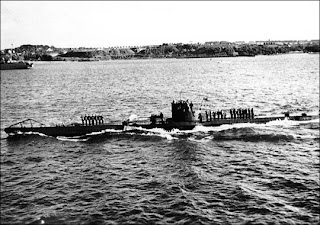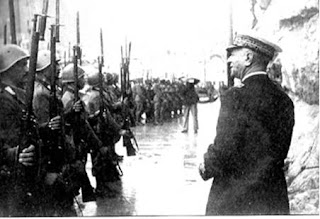I've already blocked or deleted about a dozen comments that were insulting to Germany/Germans in general or to Europe/Europeans in general. Unsurprisingly, there was never anything substantial in those comments, just mere aggression and offensive behaviour.
One of the Europe-bashers' ideas seems to look like this:
The background is - obviously - that there's a significant Muslim minority in Europe.
This minority is noteworthy in Britain (South Asians, especially Pakistanis), France (from Algeria, Morocco, Tunisia) and Germany (from Turkey), for example.
The British and French example are rooted in their colonial past while the German example is rooted in a policy of inviting South Europeans and Turks to work temporarily in Germany*.

I've actually already encountered people who tried to tell me that Muslims would be a majority in a generation. I have a *low* opinion of that opinion (and their math skill).
There's a new study (and therefore articles) about Muslims in Germany, and I expect that it's going to feed the trolls.
One of the Europe-bashers' ideas seems to look like this:
The U.S. is great and powerful, therefore Europe isn't.
A weak Europe cannot defend itself.
Well, Europe wouldn't event try.
They're a bunch of people who surrender.
They already surrendered to the Muslims without a fight.
They're already doomed & lost.
The background is - obviously - that there's a significant Muslim minority in Europe.
This minority is noteworthy in Britain (South Asians, especially Pakistanis), France (from Algeria, Morocco, Tunisia) and Germany (from Turkey), for example.
The British and French example are rooted in their colonial past while the German example is rooted in a policy of inviting South Europeans and Turks to work temporarily in Germany*.

I've actually already encountered people who tried to tell me that Muslims would be a majority in a generation. I have a *low* opinion of that opinion (and their math skill).
There's a new study (and therefore articles) about Muslims in Germany, and I expect that it's going to feed the trolls.
Germany Has 1 Million More Muslims Than Thought
*feigning to be shocked*
*feigning to be shocked*
There's a title over the title: "Challenging stereotypes".
The article and the study summary are worth reading.
Seriously; read it!
It's pointless the repeat it here, so I'd like to add my take on the topic of "Muslims in Europe".
They're not a bloc, and especially not an organized one. Most of them are simply a part of the European lower(-earning) classes, with sub-cultures just like indigenous lower class people.
* The median and average education is low.
* The median and average income is low.
* Almost none are working in the state's institutions of power (police, courts, military).
* They lack political representation; Muslim members of parliament are rare exceptions.
* The degree of political organisation (political parties, national clubs) is close to non-existing.
* They're not ethnically homogeneous. The "Turks" in Germany aren't all "Turks", for example. We have both Turks and Kurds here. They would never ever unite to topple the Germans.
* The 2nd and 3d generation Muslims are quite unlike the 1st generation and therefore don't really have the same culture as the 1st generation's homeland.
* Median/average Muslims in Germany aren't very religious. I have yet to see a Turk who interrupts work for one of the daily prayers or even prays in my field of view. Here are very few mosques in relation to the Muslim population.
* The median/average fertility is higher, but simple math keeps them from becoming a majority for many generations.
* We have quite few new Muslim immigration in Germany as far as I know. The last immigration wave came rather from Russia (better to avoid that topic...I don't really *like* our policy in this regard).
We had no census since 1987 (next is planned for 2011) in Germany, so there's little hard data on Muslims in Germany. Even the data from the new study is probably not very accurate.
Here's a graphic that helps to get the *take-over by baby boom* myth back to earth:

It's about the development of birth rates.
"Türkinnen in T." = Turkish females in Turkey
"Türkinnen in D." = Turkish females in Germany
"Deutsche" = Germans
"Deutsche Musliminnen" = German female Muslims
(Keep in mind that fertility is just one side of the coin; the other one is mortality, and I suspect that's higher as well.)
The data tells the obvious; they're humans just like us and kind of converge. There's no way how they could outnumber "Christian" or "Atheist" Germans with status quo fertility in this century.
And keep in mind; they're not a homogenous bloc; Turks and Kurds are more friendly to Germans than to each other.
Sadly, the intense and repeated B.S. propaganda about the issue of Muslims in Europe has mislead even many of those who otherwise have rather reasonable ideas. I know several such examples personally.
Oh, by the way; the unspectacular percentages of Muslims in Europe.
France: less than 10%
Germany: about 5%
UK: less than 3%
Spain: at most about 2%
Italy: less than 2%
The only European state that suffered from anything like a Muslim take-over was Yugoslavia. The Serbs "lost" Kosovo because the Muslim Albanians settled in Kosovo and achieved majority status long ago.
We actually helped the Kosovars to achieve a seemingly final success.
I suspect that this Kosovo story has inspired the outlandish myth that European countries like France will be taken over by Muslims soon.
I'd like to suggest that next time somebody approaches you with a wild opinion about Muslims taking over Europe you either tell him some facts or just smile at him and go away. The myth is not worth spreading.
Muslims in Europe won't take-over European states any time soon, they're simply no security hazard of that scale.
*: That was a quite stupid and despicable policy in my opinion. The foreign workers were called in to solve a workforce shortage. I don't accept "workforce shortage" as a problem at all. A different term for it is "full employment".
To "solve" this "problem" was not in our interest. A proper approach would have been to invest excess capital in foreign countries or to reduce the national savings rate.
edit:
There's another debunking blog post about the "Muslim takeover" hysteria at the Tiny Frog blog. I didn't even know the video in question, I was merely annoyed by recurring distribution of the myth distribution through other channels.
.
The article and the study summary are worth reading.
Seriously; read it!
It's pointless the repeat it here, so I'd like to add my take on the topic of "Muslims in Europe".
They're not a bloc, and especially not an organized one. Most of them are simply a part of the European lower(-earning) classes, with sub-cultures just like indigenous lower class people.
* The median and average education is low.
* The median and average income is low.
* Almost none are working in the state's institutions of power (police, courts, military).
* They lack political representation; Muslim members of parliament are rare exceptions.
* The degree of political organisation (political parties, national clubs) is close to non-existing.
* They're not ethnically homogeneous. The "Turks" in Germany aren't all "Turks", for example. We have both Turks and Kurds here. They would never ever unite to topple the Germans.
* The 2nd and 3d generation Muslims are quite unlike the 1st generation and therefore don't really have the same culture as the 1st generation's homeland.
* Median/average Muslims in Germany aren't very religious. I have yet to see a Turk who interrupts work for one of the daily prayers or even prays in my field of view. Here are very few mosques in relation to the Muslim population.
* The median/average fertility is higher, but simple math keeps them from becoming a majority for many generations.
* We have quite few new Muslim immigration in Germany as far as I know. The last immigration wave came rather from Russia (better to avoid that topic...I don't really *like* our policy in this regard).
We had no census since 1987 (next is planned for 2011) in Germany, so there's little hard data on Muslims in Germany. Even the data from the new study is probably not very accurate.
Here's a graphic that helps to get the *take-over by baby boom* myth back to earth:

It's about the development of birth rates.
"Türkinnen in T." = Turkish females in Turkey
"Türkinnen in D." = Turkish females in Germany
"Deutsche" = Germans
"Deutsche Musliminnen" = German female Muslims
(Keep in mind that fertility is just one side of the coin; the other one is mortality, and I suspect that's higher as well.)
The data tells the obvious; they're humans just like us and kind of converge. There's no way how they could outnumber "Christian" or "Atheist" Germans with status quo fertility in this century.
And keep in mind; they're not a homogenous bloc; Turks and Kurds are more friendly to Germans than to each other.
Sadly, the intense and repeated B.S. propaganda about the issue of Muslims in Europe has mislead even many of those who otherwise have rather reasonable ideas. I know several such examples personally.
Oh, by the way; the unspectacular percentages of Muslims in Europe.
France: less than 10%
Germany: about 5%
UK: less than 3%
Spain: at most about 2%
Italy: less than 2%
The only European state that suffered from anything like a Muslim take-over was Yugoslavia. The Serbs "lost" Kosovo because the Muslim Albanians settled in Kosovo and achieved majority status long ago.
We actually helped the Kosovars to achieve a seemingly final success.
I suspect that this Kosovo story has inspired the outlandish myth that European countries like France will be taken over by Muslims soon.
I'd like to suggest that next time somebody approaches you with a wild opinion about Muslims taking over Europe you either tell him some facts or just smile at him and go away. The myth is not worth spreading.
Muslims in Europe won't take-over European states any time soon, they're simply no security hazard of that scale.
*: That was a quite stupid and despicable policy in my opinion. The foreign workers were called in to solve a workforce shortage. I don't accept "workforce shortage" as a problem at all. A different term for it is "full employment".
To "solve" this "problem" was not in our interest. A proper approach would have been to invest excess capital in foreign countries or to reduce the national savings rate.
edit:
There's another debunking blog post about the "Muslim takeover" hysteria at the Tiny Frog blog. I didn't even know the video in question, I was merely annoyed by recurring distribution of the myth distribution through other channels.









































